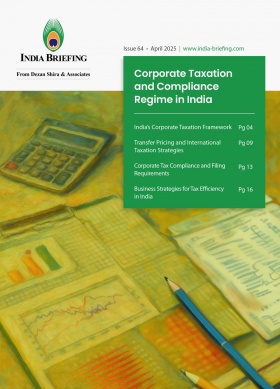Beyond America: India’s Quest to Diversify Global Seafood Exports in 2025
In FY 2024–25, India emerged as one of the leading exporters of seafood products globally. Since the US imposed steep tariffs on India in August, the central government has begun to drive market diversification toward the European Union (EU), Japan, and Southeast Asia.
Leveraging abundant marine resources, a rapidly expanding aquaculture sector, and advanced processing capabilities, India is strengthening competitiveness, increasing value-added exports, and pursuing opportunities in the blue economy.
India is the world’s second-largest fish producer, accounting for 8 percent of global output. The sector sustains nearly nine million livelihoods, ensures food and nutritional security, and drives employment and income generation.
Over the past two decades, technological advancements, infrastructure expansion, and policy reforms have reinforced India’s leadership in fisheries and aquaculture. Economically, the sector is a key contributor to exports and trade balance—India ranked sixth in marine capture production in 2022 (3.59 million tonnes) and exported 1.78 million tonnes of marine products in FY 2023–24.
India’s seafood exports in FY 2024-25
According to the data of Union Ministry of Commerce and Industry, in FY 2024–25, India exported 342,534 tonnes of marine products to the US, valued at US$2.68 billion, with total global exports valued at US$7.4 billion.
|
Top 10 Destinations for India’s Fisheries Exports in FY 2024-25 (HS Code 03) |
||
|
Rank |
Country/region |
Export (value in US$ million) |
|
1 |
US |
17,270.59 |
|
2 |
China |
9,231.53 |
|
3 |
Japan |
3,177.32 |
|
4 |
Vietnam |
2,901.59 |
|
5 |
Thailand |
2,618.73 |
|
6 |
Belgium |
1,793.36 |
|
7 |
Spain |
1,660.96 |
|
8 |
Italy |
1,463.31 |
|
9 |
UAE |
1,316.33 |
|
10 |
Canada |
1,222.16 |
Source: Department of Commerce, Ministry of Commerce and Industry, GoI.
India’s major seafood export items are as follows:
- Frozen shrimp
- Frozen fish
- Fish and shrimp meal and feed
- Frozen squid
- Surimi and surimi analogue products
- Frozen cuttlefish
- Chilled items
- Frozen octopus
- Fish oil
- Live items
- Dried edible items
- Frozen lobster
- Fish maw
- Others, including crab, agar, snail, baigai, clams, seafood mix, pickles, breaded products, and other processed seafood items.
Frozen shrimp has retained its position as India’s top seafood export, generating INR 400.13 billion (US$4.57 billion) in revenue. It accounted for 40.19 percent of the total export volume and 66.12 percent of overall earnings in dollar terms.
|
India’s Top Export Destinations for Frozen Shrimps and Prawns (Value in US$ Thousand) |
|||||
|
Importers |
2020 |
2021 |
2022 |
2023 |
2024 |
|
US |
1,810,609 |
2,580,491 |
1,888,485 |
1,811,831 |
1,882,571 |
|
China |
572,493 |
744,198 |
872,443 |
762,540 |
752,181 |
|
Japan |
307,899 |
351,452 |
330,797 |
268,972 |
280,876 |
|
Vietnam |
183,785 |
258,107 |
291,434 |
248,756 |
245,297 |
|
Belgium |
105,576 |
132,409 |
174,176 |
156,700 |
186,798 |
|
Canada |
105,278 |
130,111 |
133,264 |
133,092 |
137,752 |
|
Russia |
74,159 |
117,345 |
119,578 |
148,949 |
123,351 |
|
UAE |
137,689 |
133,925 |
115,696 |
109,223 |
119,645 |
|
UK |
101,750 |
129,239 |
122,265 |
109,867 |
86,601 |
|
Netherlands |
81,662 |
108,175 |
117,715 |
79,126 |
67,913 |
Source: International Trade Map
India seafood exports to the US amid tariff disputes
For the US, India remained the leading seafood supplier in 2024. India’s seafood exports, worth nearly US$1.92 billion in 2024, are led by shipments through major US ports such as New York, Los Angeles, Miami, and Savannah.
|
US Imports of Fish and Crustaceans, Molluscs and Other Aquatic Invertebrates from India for Self-Consumption in 2024 |
|
|
US districts |
Customs value in US$ |
|
Baltimore, MD |
59,560,801 |
|
Boston, MA |
35,079,148 |
|
Buffalo, NY |
50,372 |
|
Charleston, SC |
3,713,383 |
|
Chicago, IL |
72,137,121 |
|
Cleveland, OH |
108,177 |
|
Columbia-Snake, OR |
8,474 |
|
Dallas-Fort Worth, TX |
489,627 |
|
Detroit, MI |
36,326 |
|
Honolulu, HI |
94,406 |
|
Houston-Galveston, TX |
111,064,459 |
|
Los Angeles, CA |
331,721,803 |
|
Miami, FL |
148,188,637 |
|
Mobile, AL |
3,394,286 |
|
New Orleans, LA |
2,165,140 |
|
New York, NY |
757,872,830 |
|
Norfolk, VA |
39,484,799 |
|
Philadelphia, PA |
245,885 |
|
San Francisco, CA |
30,222,792 |
|
San Juan, PR |
2,807,202 |
|
Savannah, GA |
163,340,379 |
|
Seattle, WA |
56,848,441 |
|
St. Louis, MO |
5,766,720 |
|
Tampa, FL |
95,415,120 |
|
Virgin Islands of the United States |
24,667 |
|
Washington, DC |
32,985 |
|
Total |
1,919,873,980 |
Source: US merchandise trade statistics, US Department of Commerce, Census Bureau.
This trade relationship now faces mounting pressure after Washington imposed a 25 percent tariff on most Indian goods, effective August 7, 2025, with the potential that the rate will rise further to 50 percent. For seafood, the impact is particularly severe. The US has levied a steep tariff on Indian seafood, one of the highest across all export categories.
Before these changes, seafood exporters from India were subject to a total duty burden of 18.33 percent, comprising a 2.56 percent anti-dumping duty (ADD), a 5.77 percent countervailing duty (CVD), and a 10 percent reciprocal tariff imposed on April 2, 2025. Under the revised structure, the ADD has increased to 3.96 percent, the CVD remains unchanged, and the reciprocal tariff has been raised to 25 percent, inclusive of penalties.
Diversifying seafood export destinations
On August 11, 2025, the central government urged its seafood exporters to expand their market reach to destinations such as the EU, Japan, South Korea, the UK, Russia, Australia, West Asia, and Southeast Asia. The move is widely viewed as a tactic in ongoing India-US trade negotiations.
The central government has directed exporters to diversify markets, enhance value addition, and upgrade packaging standards. It also encouraged them to utilize the Fishery Infrastructure Development Fund (FIDF) to modernize processing facilities, value-added production, and packaging capabilities.
Additionally, the Marine Products Export Development Authority (MPEDA) received instructions to collaborate with exporters in four major producing states, – Andhra Pradesh, West Bengal, Kerala, and Gujarat – to identify new market opportunities and high-demand fish varieties overseas.
FIDF, launched in 2018 with a corpus of INR 75.22 billion (US$859.82 million), aims to modernize and expand India’s fisheries infrastructure. It provides concessional finance through national financial institutions , state governments, cooperatives, entrepreneurs, and private investors. Under FIDF, financial assistance is provided for projects such as fishing harbor upgrades, landing centers, cold storage, processing units, and aquaculture facilities.
With repayment periods of up to 12 years and interest subvention, the fund seeks to boost exports, reduce post-harvest losses, and enhance value addition, strengthening India’s competitiveness in the global seafood market.
ALSO READ: India’s 2025 Maritime Push with US$20 Billion Investment and Global Ties
Tamil Nadu’s roadmap to become a global seafood export hub
On July 3, 2025, it was reported that the Tamil Nadu state government had set a goal of achieving US$5 billion in seafood exports by leveraging its 1,076-km coastline and expanding value-added processing capabilities. The plan focuses on positioning the state as a center for high-quality, processed seafood rather than relying solely on raw catch exports.
The state government’s industries minister, Dr. TRB Rajaa, highlighted that the initiative will involve building comprehensive infrastructure across coastal districts. This includes modern processing facilities, efficient cold chain systems, and export-grade packaging units to meet international standards.
Beyond boosting trade, the state aims to create sustainable livelihoods, raise incomes for fishing communities, and capitalize on opportunities within the blue economy.
India’s blue economy: An overview
India’s fisheries sector benefits from an extensive exclusive economic zone (EEZ) covering over 2 million square kilometers and extending 200 nautical miles into the Indian Ocean. Marine capture fisheries—particularly traditional and small-scale operations—play a pivotal role in supporting coastal livelihoods and contributing to national output.
Fisheries production and infrastructure
The country’s fishing ecosystem comprises of the following:
- 3,827 fishing villages and 1,914 traditional landing centres
- 10 major fishing harbours in cities such as Mangalore, Kochi, Neendakara, Vizhinjam, Tuticorin, Chennai, Vishakhapatnam, and Raichak
- 23 minor harbors and 95 designated fish-landing centers providing berthing and unloading facilities
Fishing practices range from traditional vessels—catamarans, dhonis, and dugout canoes—to modern mechanized trawlers, gillnetters, and motorized fiberglass boats. As of 2019, the marine fleet numbered 194,490 crafts: 37 percent mechanized, 37 percent motorised, and 26 percent non-motorized.
Inland fisheries and aquaculture have been the primary growth drivers, now contributing over three-fourths of national output.
Technology integration
The sector has also adopted advanced technologies to improve efficiency and sustainability. Key initiatives include:
- Vessel Communication Systems for nationwide maritime safety and monitoring
- Oceansat-based Potential Fishing Zone (PFZ) forecasts to guide fishing efforts
- GIS-based mapping of marine resources and landing centres for better resource management
These advancements are enhancing catch efficiency, reducing operational costs, and promoting sustainable fishing practices.
Regulatory framework
Fisheries management in India is governed by state-level Marine Fishing Regulation Acts, which enforce measures such as the following:
- Seasonal fishing bans to protect breeding and spawning
- Zonal restrictions for different vessel categories
- Gear regulations to prevent overfishing
Conclusion
- Previous Article India’s Semiconductor Leap: 4 New Plants Approved in Odisha, Punjab, Andhra
- Next Article Corporate Social Responsibility in India








